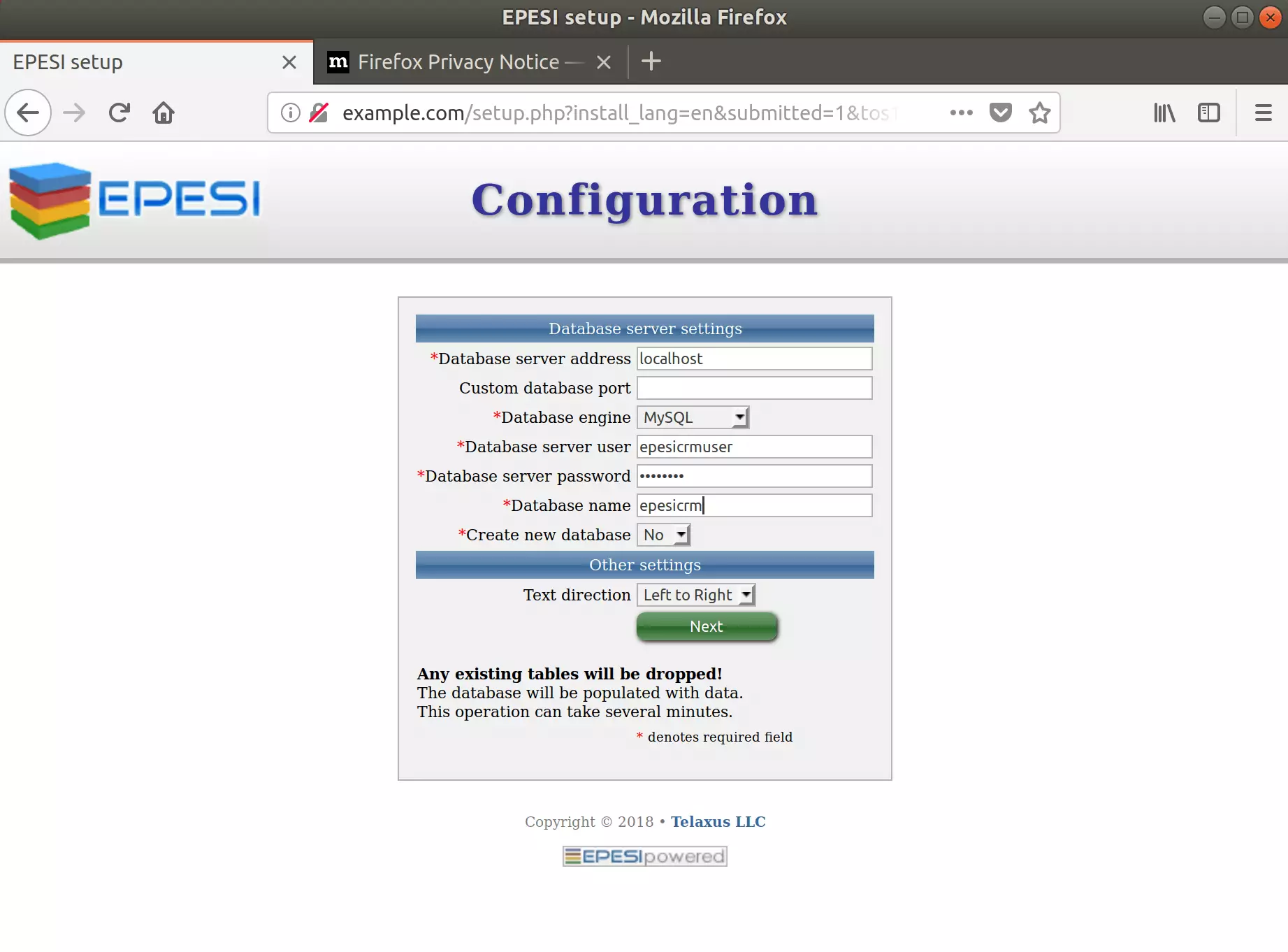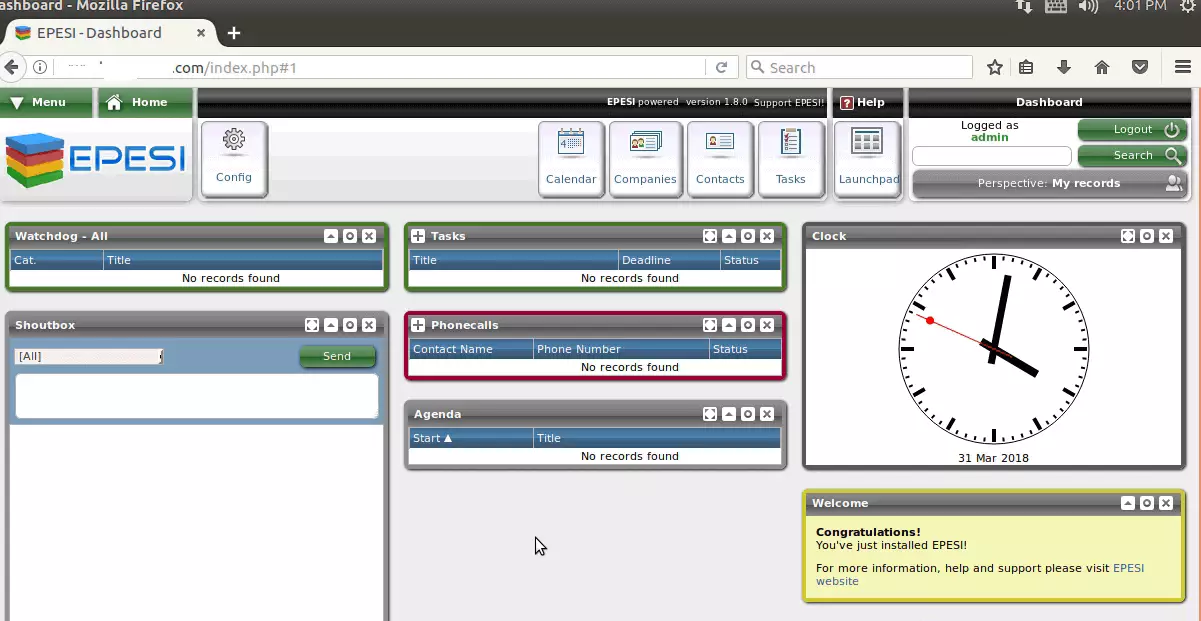This article describes the steps to install EPESI CRM on Ubuntu Linux with Apache support.
EPESI is an open-source CRM platform for businesses to manage their CRM needs, including organizing, processing, and storing information in every industry.
Installing EPESI CRM with Apache on Ubuntu Linux is an excellent way for businesses to manage Customer Relationship Management (CRM) needs. EPESI is an open-source CRM platform that offers features such as a workflow engine and intuitive features, making it easy to configure and set up.
By installing EPESI on Ubuntu Linux with Apache support, businesses can effectively organize, process, and store information in every aspect of their business. Additionally, EPESI is built on the LAMP/LEMP stack and offers features that help companies collaborate with their customers.
Install EPESI CMS on Ubuntu Linux with Apache support
As described above, EPESI is an open-source CRM platform for businesses to manage their CRM needs, including organizing, processing, and storing information in every industry.
Below is how to install it on Ubuntu Linux with Nginx support.
Install Apache2
EPESI CMS needs a web server. So go and install Apache2 on Ubuntu by running the commands below:
sudo apt update sudo apt install apache2
Next, run the commands below to stop, start, and enable the Apache2 service to always start up with the server boots.
sudo systemctl stop apache2.service sudo systemctl start apache2.service sudo systemctl enable apache2.service
Install MariaDB
EPESI CMS also requires a database server. And MariaDB database server is a great place to start. To install it, run the commands below.
sudo apt-get install mariadb-server mariadb-client
After installing MariaDB, the commands below can stop, start, and enable the service to start when the server boots.
Run these on Ubuntu 16.04 LTS
sudo systemctl stop mysql.service sudo systemctl start mysql.service sudo systemctl enable mysql.service
Run these on Ubuntu 17.10 and 18.04 LTS
sudo systemctl stop mariadb.service sudo systemctl start mariadb.service sudo systemctl enable mariadb.service
After that, run the commands below to secure the MariaDB server by creating a root password and disallowing remote root access.
sudo mysql_secure_installation
When prompted, answer the questions below by following the guide.
- Enter current password for root (enter for none): Press the Enter
- Set root password? [Y/n]: Y
- New password: Enter the password
- Re-enter new password: Repeat password
- Remove anonymous users? [Y/n]: Y
- Disallow root login remotely? [Y/n]: Y
- Remove test database and access to it? [Y/n]: Y
- Reload privilege tables now? [Y/n]: Y
Restart MariaDB server
sudo systemctl restart mysql.service
Install PHP 7.2 and Related Modules
If PHP 7.2 isn’t available on Ubuntu default repositories… you’ll have to enable a third-party repository to install it.
Run the commands below to add the below third party repository to upgrade to PHP 7.2
sudo apt-get install software-properties-common sudo add-apt-repository ppa:ondrej/php
Then update and upgrade to PHP 7.2
sudo apt update
Run the commands below to install PHP 7.1 and related modules.
sudo apt install php7.2 libapache2-mod-php7.2 php7.2-common php7.2-mbstring php7.2-xmlrpc php7.2-soap php7.2-gd php7.2-xml php7.2-intl php7.2-mysql php7.2-cli php7.2-ldap php7.2-zip php7.2-curl
After installing PHP, run the commands below to open the Apache2 PHP default file.
sudo nano /etc/php/7.2/apache2/php.ini
Then, change to the lines below in the file and save.
file_uploads = On allow_url_fopen = On memory_limit = 256M upload_max_filesize = 64M max_execution_time = 30 display_errors = Off max_input_vars = 1500 date.timezone = America/Chicago
Create EPESI CMS Database
Now that you’ve installed all the required packages, continue below to start configuring the servers.
First, run the commands below to create the EPESI CMS database.
Run the commands below to log on to the database server. When prompted for a password, type the root password you created above.
sudo mysql -u root -p
Then, create a database called epesicrm
CREATE DATABASE epesicrm;
Create a database user called epesicrmuser with a new password
CREATE USER 'epesicrmuser'@'localhost' IDENTIFIED BY 'new_password_here';
Then, grant the user full access to the database.
GRANT ALL ON epesicrm.* TO 'epesicrmuser'@'localhost' IDENTIFIED BY 'user_password_here' WITH GRANT OPTION;
Finally, save your changes and exit.
FLUSH PRIVILEGES; EXIT;
Download EPESI CMS Latest Release
Next, visit the EPESI CMS site and download the latest version.
After downloading, run the commands below to extract the download file into the Apache2 root directory.
cd /tmp && wget https://github.com/Telaxus/EPESI/releases/download/v1.8.2/epesi-1.8.2-20170430.zip unzip epesi-1.8.2-20170430.zip sudo mv epesi-1.8.2-20170430/ /var/www/html/epesicrm
Then, run the commands below to set the correct permissions for Concrete5 to function.
sudo chown -R www-data:www-data /var/www/html/epesicrm/ sudo chmod -R 755 /var/www/html/epesicrm/
Configure Apache2
Finally, configure the Apahce2 site configuration file for EPESI CMS. This file will control how users access EPESI CMS content. Run the commands below to create a new configuration file called episperm. conf
sudo nano /etc/apache2/sites-available/epesicrm.conf
Then copy and paste the content below into the file and save it. Replace the highlighted line with your domain name and directory root location.
<VirtualHost *:80>
ServerAdmin [email protected]
DocumentRoot /var/www/html/epesicrm/
ServerName example.com
ServerAlias www.example.com
<Directory /var/www/html/epesicrm/>
Options +FollowSymlinks
AllowOverride All
Require all granted
</Directory>
ErrorLog ${APACHE_LOG_DIR}/error.log
CustomLog ${APACHE_LOG_DIR}/access.log combined
</VirtualHost>
Save the file and exit.
Enable the EPESI CMS
After configuring the VirtualHost above, please enable it by running the commands below.
sudo a2ensite epesicrm.conf sudo a2enmod rewrite
Restart Apache2 by running the commands below to load all the settings above.
sudo systemctl restart apache2.service
Then open your browser and browse to the server domain name, followed by Install. Next, you should see the EPESI CMS setup wizard complete. Please follow the wizard carefully.
http://example.com
Then, follow the on-screen instructions until you’ve successfully installed EPESI CMS. Next, create an admin account, type in the database connection you made above, and click Install.

Type the database info and create an admin account for the portal. And continue until you’ve successfully installed the application.

Enjoy!

You may also like the post below:

Leave a Reply